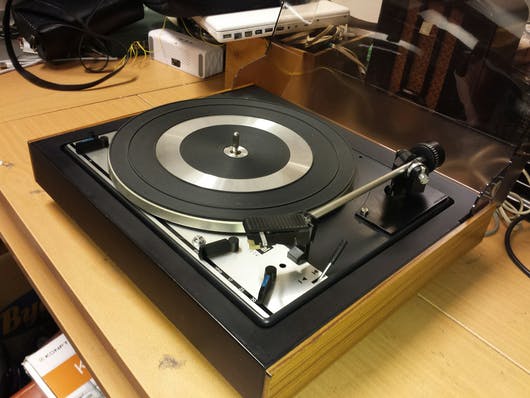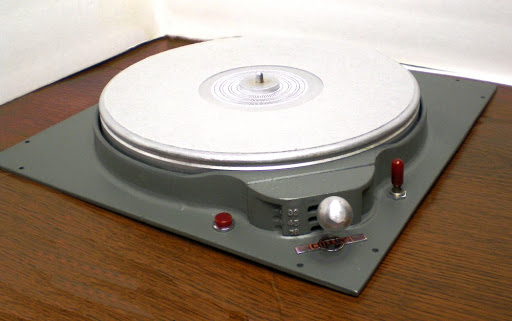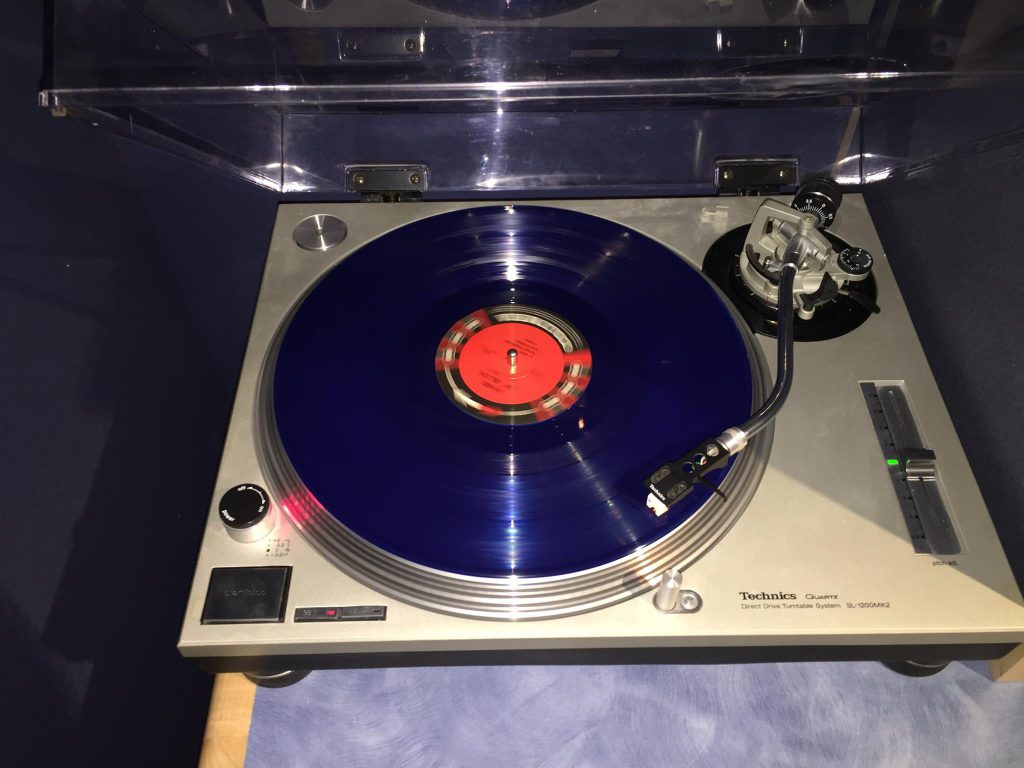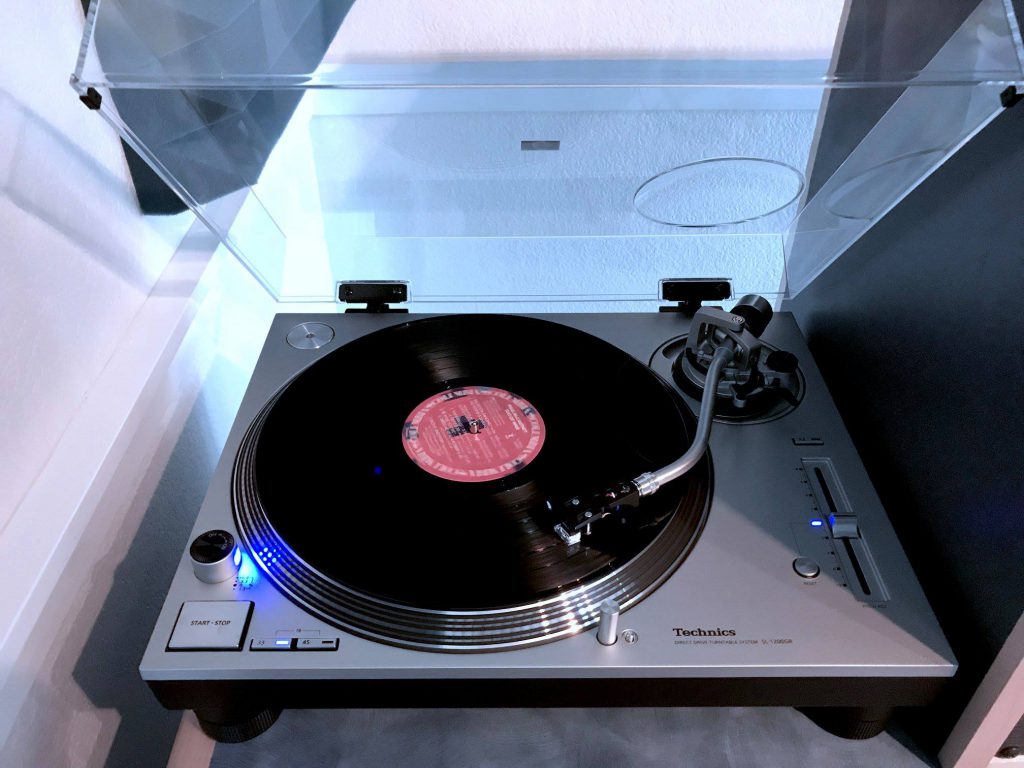National “days” are often thought of as not-so-clever marketing ploys (almost as much as “Small Business Saturday” is a no-apologies ploy by American Express to convince little mom-and-pop brick-and-mortars that don’t want to pay AMEX’s blood money to take their stupid card). But, I must profess to getting into some food-related national days. National Ice Cream Day… not bad. National Pizza Day… better. National Donut Day? BRING IT!!!
Then, there’s National Vinyl Record Day celebrated today. This isn’t the same as Record Store Day, which comes up later this month. I’d heard of Record Store Day before yesterday. Not the same for NVRD. National Vinyl Record Day doesn’t come from a big company — it comes from “just a guy” named Gary Freiberg. Every indication is that Frieberg came up with this because he really loves vinyl and wants to see it nurtured.
I thought it would be fun to take a look at my history with the turntable, in particular as it relates to radio and professional audio. I remember my Dad driving me from Riverton WY to Laramie WY when I was, probably, about 13 or 14 years old. There weren’t any stereo stores in Riverton, but there was one in Laramie. The salesperson appeared to get extra sales margin on Advent products, so he tried to sell me just about everything from Advent. I only went for the Advent loudspeaker (anyone remember that?) I ended up with a Teac cassette deck, a Sony receiver, and the Dual 1214 turntable.

Radio stations had different turntable needs, with several requirements that consumer tables didn’t require:
- Durability: they needed to work, in many cases, 24 hours per day.
- Quick start-up time: when you turned them on, they had to start quickly to leave minimal time between the DJ saying “here is…” and the music starting.
- Back cue capability: in case you wondered how a DJ always knew when the song started, they would put the turntable in “cue” (audio would come out of a small separate speaker and not go on the air), would play the record until the song started, and then turn the table backwards about 1/4 to 1/2 turn — home turntables with consumer phono cartridges and belts didn’t turn backwards very well.
Early broadcast turntables could be described as “tanks.” These things were made of heavy metal with roller systems and mechanical controls. They were pretty simple, with a motor and spindle that would mate up to a two- or three-level rubber roller that would spin the platter at 33 1/3, 45, or 78 rpm. And, while they were designed for durability, sound quality wasn’t exactly their forte. Especially on soft song segments, you could often hear the rumble of the turntable louder than the music itself.

FM stations that had some semblance of concern for sound quality needed something better. The Technics SP10 professional broadcast turntable was pretty popular in the 70s and 80s at stations that wanted a better sound. These were professional decks from the professional division of Panasonic. Like most broadcast equipment, they came with premium prices (the SP10 cost something like $1,500 — no small change in the mid 70s).
Then came disco. That introduced a new requirement for a whole lot of people — broadcast capabilities (back cuing, scratching, and durability) without the high price. Enter the Technics SL-1200. There were several models of this, but the de-facto disco standard would be the SL-1200MK2. Priced at around $600, it would be found in quantities of two at just about every club in the world. And, in the 80s as CDs were introduced, 1200s found their way into lots of radio stations that still needed to play a little vinyl now and then until albums were released on CD. When Denise and I started our mobile DJ business in the late 80s, we bought one SL-1200MK2.

When we sold the DJ gear in the mid 90s, the Technics was retained. I had gone pretty much all CD, but had a fair amount of vinyl in cardboard boxes that I still wanted to be able to play if I needed to. When we moved to Colorado and I built my radio studio, the Technics came out of moth balls. I had to use alcohol wipes to get the masking tape glue from the move off the table. But, it cleaned up, looked as good as new, and sat proudly in my radio studio for the occasional vinyl special.
As vinyl popularity continued to wane, Technics sold fewer and fewer of the SL-1200 series. Finally, in 2010, they announced that they would discontinue the model. In an odd sense of timing, only a few years would pass before the sudden unexpected resurgence in vinyl would begin. Petitions were started and calls got louder for Panasonic to revive the line. It was rumored that the only part of the production line that hadn’t been decommissioned was for the dust cover. The remainder of the machinery had been dismantled.
Technics announced the return of the line in 2016, featuring the SL-1200 Grand Class 50th Anniversary Edition (SL-1200GAE) at the 2016 Consumer Electronics Show. Panasonic would produce only 1,200 of the units at a cost of $4,000 each. I toyed with the idea, but couldn’t justify the price. It didn’t matter — all 1,200 sold out within a day or two. Then, lower-priced models were announced and I renewed my interest.
The SL-1200GR was announced at 2017 CES. While some components would not match that of the $4,000 model, the general appearance and specifications were similar, and the model very closely matched the 1200MK2 that was sitting in my studio. But, why upgrade? I counted the number of times I played vinyl in any given year on the fingers of one hand. Still, a new 1200? Yeah, it was $1,700, but… a NEW 1200!
To justify my direction, I analyzed the fact that one of the radio stations I volunteered for proudly included the word “vinyl” in its primary branding. There was just one problem: the radio station did not possess a turntable. So, in December 2017 I upgraded the cartridge to an Ortofon, put a big ol’ bow on the dust cover, and gave the station a Christmas present. The plan was to upgrade to the SL-1200GR when I could get my hands on one — so far, they were only available in the UK. Eventually, I found a dealer in Denver that had one — and, I was the proud new owner.

Compare this photo to the original 1200MK2 above — physically, the power LED is blue instead of red, the LED next to the pitch slider has changed color, and there’s a pitch “defeat” button on the newer model. Otherwise, they’re pretty hard to tell apart.
